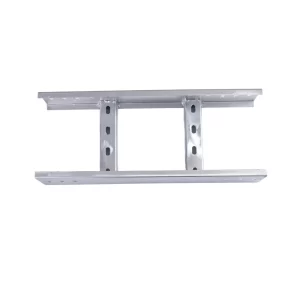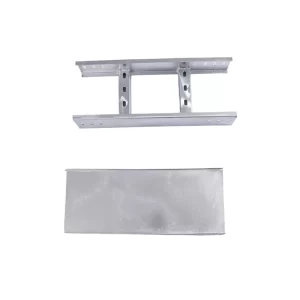Cable ladders are an essential component of many electrical and industrial installations. They provide a safe and organized way to route cables and wires, ensuring proper ventilation and easy access for maintenance. One important consideration when choosing a cable ladder is its width. In this article, we’ll explore the standard widths of cable ladders and what factors to consider when selecting the right size for your application.

Understanding Cable Ladder Widths
The width of a cable ladder refers to the distance between the two side rails. Standard cable ladder widths typically range from 6 inches (150 mm) to 36 inches (900 mm) or more. The most common widths are 12 inches (300 mm), 18 inches (450 mm), and 24 inches (600 mm).
The width you choose will depend on several factors, including the number and size of cables you need to support, the available space in your installation area, and any applicable building codes or regulations.
Factors to Consider When Selecting Cable Ladder Width
1. Cable Capacity
The number and size of cables you need to route will play a significant role in determining the appropriate cable ladder width. Consider the total cross-sectional area of your cables and ensure that the selected cable ladder has sufficient capacity to accommodate them without overcrowding. Overcrowding can lead to poor ventilation, difficulty in accessing cables for maintenance, and potential damage to the cables.
2. Installation Space
The available space in your installation area is another crucial factor. Measure the area where the cable ladder will be installed and ensure that there is enough room for the chosen width. Consider factors such as ceiling height, wall clearance, and any obstructions that may affect the installation. You also need to leave enough space for workers to access the cables and perform maintenance tasks.
3. Building Codes and Regulations
Some building codes and regulations may specify minimum or maximum cable ladder widths for certain applications. Check with your local building authorities to ensure that you are in compliance with all applicable codes. Additionally, some industries may have specific requirements for cable ladder widths based on safety and performance standards.
4. Future Expansion
If you anticipate future growth or expansion of your cable infrastructure, it may be wise to choose a cable ladder with a slightly larger width than currently needed. This will allow for easier addition of new cables in the future without the need for extensive modifications or replacements.
5. Load Capacity
In addition to cable capacity, consider the load capacity of the cable ladder. Cable ladders are designed to support the weight of the cables as well as any additional loads such as conduit, junction boxes, or other accessories. Ensure that the selected cable ladder has a sufficient load capacity to meet your requirements.

Standard Cable Ladder Widths and Their Applications
1. 6 inches (150 mm)
This is a relatively narrow cable ladder width and is typically used for small-scale installations or where space is limited. It may be suitable for routing a small number of low-voltage cables or in areas where only a few cables need to be supported.
2. 12 inches (300 mm)
A 12-inch cable ladder is a common choice for many applications. It can accommodate a moderate number of cables and is suitable for both commercial and industrial installations. This width is often used in offices, retail spaces, and small to medium-sized industrial facilities.
3. 18 inches (450 mm)
An 18-inch cable ladder provides more space for cables and is often used in larger installations or where a greater number of cables need to be routed. It is suitable for industrial plants, data centers, and large commercial buildings.
4. 24 inches (600 mm) and above
Cable ladders with widths of 24 inches or more are typically used in very large installations or where there is a high density of cables. These widths are common in power plants, refineries, and other heavy industrial applications.
The standard width of a cable ladder can vary depending on several factors, including cable capacity, installation space, building codes, and future expansion needs. When selecting a cable ladder width, carefully consider these factors to ensure that you choose a size that meets your specific requirements. By choosing the right cable ladder width, you can ensure a safe, organized, and efficient cable routing system for your electrical or industrial installation.

